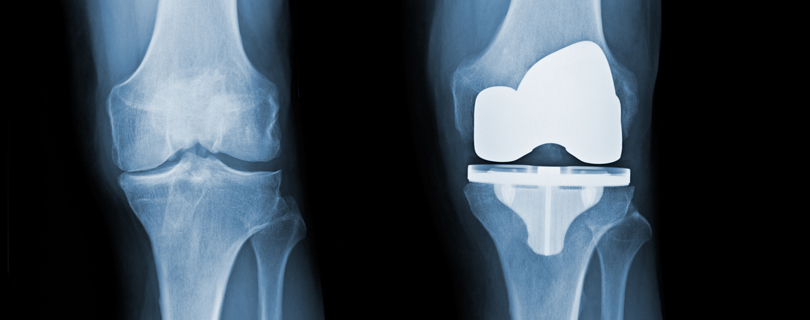
Total Knee Replacement Surgery
Total knee replacement, also known as total knee arthroplasty, is a surgical procedure that is performed to replace the damaged or diseased knee joint with an artificial joint or prosthesis. This surgery is typically recommended for patients with severe osteoarthritis, rheumatoid arthritis, or other degenerative joint diseases that cause pain, stiffness, and limited mobility.
During the surgery, the surgeon removes the damaged cartilage and bone from the knee joint and replaces it with a metal or plastic implant that mimics the natural movement of the knee joint. The artificial joint is secured in place with bone cement or other fixation methods.
Recovery from total knee replacement surgery can take several weeks or months, and may involve physical therapy and other forms of rehabilitation to help restore strength, mobility, and flexibility to the knee joint. With proper care and rehabilitation, many patients are able to return to their normal activities and enjoy improved quality of life after total knee replacement surgery
All forms of arthritis and other joint disease can lead to severe damage to the joints; cartilage is severely damaged, resulting in severe damage to the joints leading to unbearable pain. This is called end-stage joint disease.
Total Knee Replacement is advised
when patient is suffering from one or more conditions mentioned below:
- Aged above 60 years.
- Unbearable Knee pain.
- Impaired daily activities.
- Experiencing severe pain in the night.
- Failure of other joint treatments.
Based on the severity of the condition diagnosed, a treatment is advised.
Although surgery is not always needed, the majority of the knee ailments can be managed without surgery through physiotherapy and anti-inflammatory prescribed medicines. For someone younger than 60 years, but severely affected by knee pain, may also be considered for surgery.
In rheumatoid arthritis, patients usually suffer from the involvement of multiple joints at a younger age. Due to the crippling nature of this disease, surgery is performed. The doctor will rule out other sources of leg pain, such as pain radiating from spine or hip. Other factors like body weight and medical fitness to surgery are also important. Generally, patients who are obese have less favourable long-term results.
Preparation:
Before the surgery, the patient will undergo a thorough medical evaluation to ensure that they are healthy enough for the procedure. This may involve blood tests, imaging tests such as X-rays or MRI, and other diagnostic tests.
The patient may also be advised to stop taking certain medications, such as blood thinners, in the days leading up to the surgery. They may also be asked to stop eating or drinking for a period of time before the surgery.
The Surgery:
Total knee replacement surgery is typically performed under general anesthesia, which means the patient is asleep during the procedure. In some cases, spinal anesthesia may be used instead.
The artificial joint components are then attached to the ends of the femur and tibia using bone cement or other fixation methods. A plastic spacer is placed between the two metal components to allow for smooth movement of the joint.
The incision is then closed with sutures or staples, and the patient is taken to a recovery room to begin the post-operative recovery process.
The surgeon makes an incision over the knee joint and removes the damaged cartilage and bone from the joint. The ends of the femur (thigh bone) and tibia (shin bone) are then reshaped to fit the artificial joint components.
Recovery:
After surgery, the patient may spend several days in the hospital to recover. During this time, they will receive pain medication, antibiotics to prevent infection, and other treatments as needed.
The patient will also begin a course of physical therapy to help them regain strength and mobility in the knee joint. This may involve exercises, stretches, and other therapies to improve range of motion and reduce swelling and stiffness.
Full recovery from total knee replacement surgery can take several months, and the patient may need to continue with physical therapy and other treatments for some time after leaving the hospital. However, with proper care and rehabilitation, many patients are able to return to their normal activities and enjoy improved quality of life after total knee replacement surgery.
The artificial joint components are then attached to the ends of the femur and tibia using bone cement or other fixation methods. A plastic spacer is placed between the two metal components to allow for smooth movement of the joint.
The incision is then closed with sutures or staples, and the patient is taken to a recovery room to begin the post-operative recovery process.
The surgeon makes an incision over the knee joint and removes the damaged cartilage and bone from the joint. The ends of the femur (thigh bone) and tibia (shin bone) are then reshaped to fit the artificial joint components.